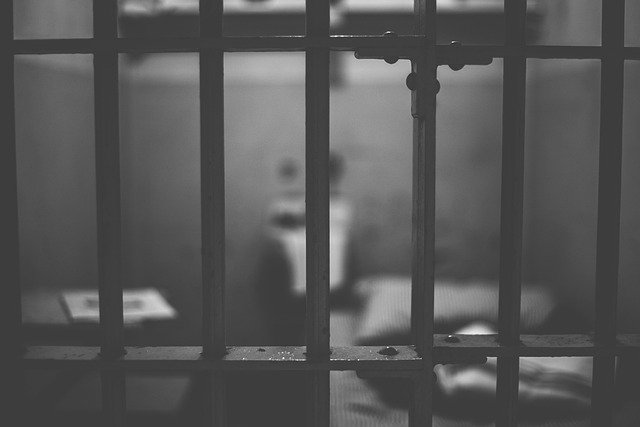The world’s prison population has reached an all-time high of more than 11.5 million, which is 24% higher than the figures in 2000.
With inmate numbers rising fast, nations continue to pour their budgets into building more correctional facilities instead of investing in non-custodial alternatives.
These measures refer to non-detention programs that aim to improve individuals’ prospects of reintegrating into their communities.
Research indicates that actual national expenses for prison management can go under-reported.
The Prison Policy Initiative noted that while U.S. correctional agencies documented $80.7 billion for their 2017 budget, the total imprisonment cost for that year reached 182 billion U.S. dollars.
At the same time, 2020 data also shows how underfunded prison management can be in poorer countries.
Prisoners in Kazakhstan get €1.41 or $1.40 daily for food, reportedly an amount two times below the rate of previous years, according to Prison Insider. In Cambodia and the Central African Republic, the daily food budget for every inmate is also less than €1 or $0.99.
Compared to other countries, American inmates have it better at $3.18 per head, based on the daily meal budget set by the national government. You can learn more about U.S. prison management costs by reading this article.
How much is the world spending on its prisons? This article will discuss the cost of running prisons and the financial burden shouldered by the families and communities of the incarcerated.
Government Spending on Prisons
In the European Union, a 2020 report from Eurostat—the statistics office of the European Commission—shows that member nations allocate roughly 1.8% of their government budgets to public order and safety.
However, of that percentage, only 2% of the budget goes to prisons. Police services get 1% of the share, while police services receive 0.3%.
In the United States, the corrections sector also receives around 2% of the national budget, below the roughly 3% that goes to law enforcement.
The updates don’t include breakdowns of correctional budgets. However, constructing new facilities may eat up the funds based on Penal Reform International (PRI) data on new prison facilities.
According to the group’s report, at least 24 nations plan to build new structures, creating about 437,000 additional spaces for inmates.
While information about the prison population in other parts of the world is available, updated cumulative reports on correctional service budgets hardly exist.
Hidden Costs of Incarceration
In the American setting, the families must set aside funds for legal fees, visits, care, packages, and phone calls for their incarcerated loved ones.
Sociologist Hedwig Lee of the Washington University in St. Louis said these expenses could take up 9% to 26% of the family’s income.
Some families must apply for loans to cover $13,000 in legal fees.
Individuals with imprisoned kin interviewed by The Marshall Project in 2019 said that annual expenses could run up to over $2,000 to top up their loved ones’ commissary account alone.
They also spend more than $3,500 on phone calls and $419 on email.
Moreover, incarceration of parents, children, or siblings may lead to emotional and psychological difficulties, especially among adolescents, that are hard to quantify.
Views on Prison Reform
Penal reform advocates are pushing governments to prioritize protecting prisoners’ fundamental rights and programs to improve reentry to the community.
As PRI puts it, policymakers must not view imprisonment as the primary solution to curbing criminal behavior when they can pursue non-detention programs.
The group makes Norway an example. The nation’s correctional system ensures prisoners have the best chance of reintegration to avoid overcrowding their institutions.
The country’s efforts to improve living conditions, well-kept prisoner infrastructure, recreational and professional activities, and increased family time paid off in two years.
Norway’s reimprisonment rate declined to 20% in 2019, lower than the worldwide range of 26% to 60% then.
The United Nations Office on Drugs and Crime acknowledges the “detrimental impact of imprisonment,” noting that countries need to adopt a “multi-disciplinary” strategy.
This U.N. arm notes that the approach covers crime prevention and sentencing policies, not just services within prison facilities.
Meanwhile, U.S.-based reform supporters seek changes that will consider the plight of older inmates, including reducing excessively long sentences and considering them for parole without compromising public safety.
To resolve racial disparities in the American prison system, the Sentencing Project calls for a review of local and national laws and the use of racial impact studies and statutes.
A 2019 report from the non-profit The Marshall Project news organization says that Black Americans received longer sentences, and their sentence lengths grew twice as fast as other races.
Black American state inmates outnumber their white American counterparts by nearly five times. Meanwhile, Latinx people in state prisons are 1.3 times higher than white prisoners nationwide.
The Sentencing Project adds that mandatory sentences and arrests for low-level drug offenses prejudice Black and Latinx people.
The Washington D.C.-based center believes that ending such arrests and sentences would significantly bring down America’s inmate population.
References
Global Prison Trends 2022
https://cdn.penalreform.org/wp-content/uploads/2022/05/GPT2022.pdf
Alternatives to Imprisonment
https://www.unodc.org/unodc/en/justice-and-prison-reform/cpcj-alternatives-to-imprisonment.html
The 2021-Budget: Funding for Inmate Meal Costs
https://lao.ca.gov/handouts/crimjust/2021/2021-Budget-Funding-for-Inmate-Meal-Costs-020221.pdf
Government expenditure on public order and safety
State and Local Backgrounders
World Prison Population List
Who Pays? The True Cost of Incarceration on Families
https://nicic.gov/who-pays-true-cost-incarceration-families
The Emotional Experience of Parental Incarceration from the African-American Adolescent Perspective
https://www.ncbi.nlm.nih.gov/pmc/articles/PMC7163882/
A systematic review of criminal recidivism rates worldwide: 3-year update
https://www.ncbi.nlm.nih.gov/pmc/articles/PMC6743246/
Why promote prison reform?
The Color of Justice: Racial and Ethnic Disparity in State Prisons







Recent Comments